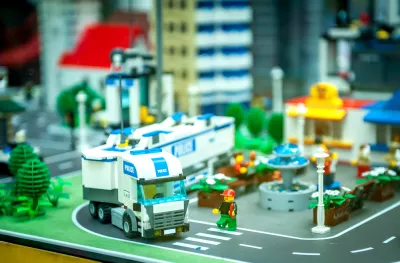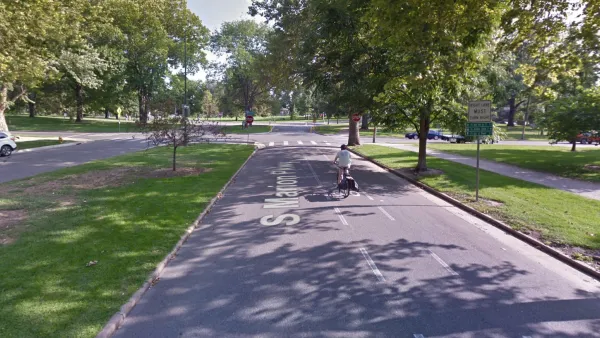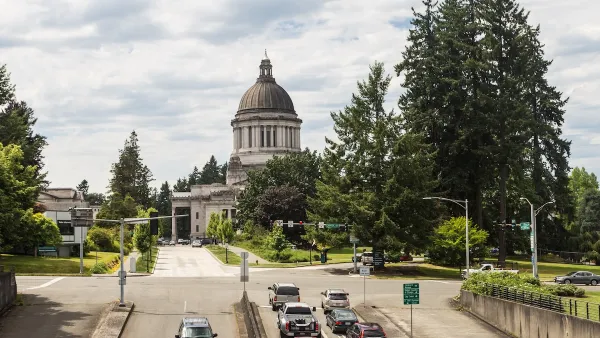A Dutch advocate believes Lego's city sets should reflect streets that prioritize all users. Including bike lanes would be one way for the toy manufacturer to start accomplishing that goal.

Andrew J. Hawkins reports on Lego's curious neglect of bikes: "The streets in Lego’s city sets had space for cars, trains, even tiny storm drains but no designated space for zero-emission, human-powered vehicles like bikes."
"Even worse," adds Hawkins, "it appeared that Lego’s streets were becoming more hostile toward pedestrians over time. As compared to Lego sets from years ago, the cars seem to have grown larger — evolving from four- to six-studs wide — and the roads appeared to be getting wider, while the sidewalks were getting more and more narrow."
A regional councilor from the Netherlands named Marcel Steeman has launched an advocacy campaign o move Lego toward more environmentally friendly representations of the world's built environment.
With the help of Marco te Brommelstroet, an associate professor in urban planning at the University of Amsterdam who tweets under the name Cycling Professor, Steeman submitted two designs to Lego’s “Ideas” project, in which fans are encouraged to submit proposals for new Lego sets. His proposal was simple: more bike lanes.
So far, the efforts has met roadblocks from Lego while winning attention online.

National Parks Layoffs Will Cause Communities to Lose Billions
Thousands of essential park workers were laid off this week, just before the busy spring break season.

Retro-silient?: America’s First “Eco-burb,” The Woodlands Turns 50
A master-planned community north of Houston offers lessons on green infrastructure and resilient design, but falls short of its founder’s lofty affordability and walkability goals.

Delivering for America Plan Will Downgrade Mail Service in at Least 49.5 Percent of Zip Codes
Republican and Democrat lawmakers criticize the plan for its disproportionate negative impact on rural communities.

Test News Post 1
This is a summary

Test News Headline 46
Test for the image on the front page.

Balancing Bombs and Butterflies: How the National Guard Protects a Rare Species
The National Guard at Fort Indiantown Gap uses GIS technology and land management strategies to balance military training with conservation efforts, ensuring the survival of the rare eastern regal fritillary butterfly.
Urban Design for Planners 1: Software Tools
This six-course series explores essential urban design concepts using open source software and equips planners with the tools they need to participate fully in the urban design process.
Planning for Universal Design
Learn the tools for implementing Universal Design in planning regulations.
EMC Planning Group, Inc.
Planetizen
Planetizen
Mpact (formerly Rail~Volution)
Great Falls Development Authority, Inc.
HUDs Office of Policy Development and Research
NYU Wagner Graduate School of Public Service




























